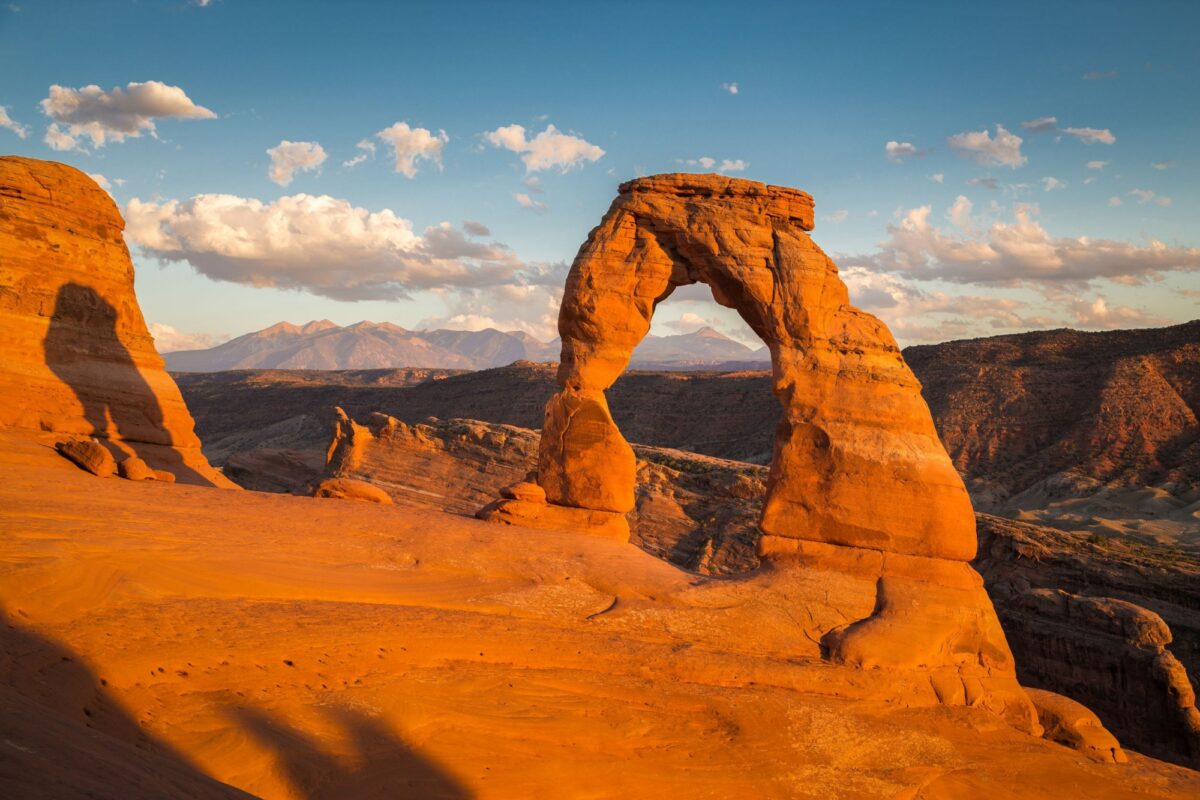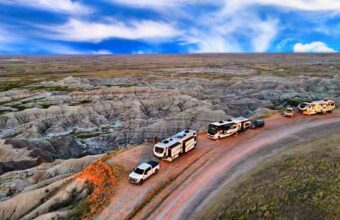Utah National Parks Road Trip
Road trips through red rock country
Fiery red rock formations dot the Southwest, lighting up the landscape at sunrise and sunset with a brilliant array of colours, from red to orange to deep purple.
Created by erosion over millennia, and still changing today, these sandstone wonders are the photographic highlight of most road trips across southern Utah.
Utah national park road trip route
Approx. distance: 1,200 miles
Duration: 10 days
Suggested route: Salt Lake City, Zion National Park, Bryce Canyon National Park, Kodachrome Basin State Park, Capitol Reef National Park, Moab, Arches National Park, Canyonlands National Park, Salt Lake City

The classic view of Utah's Arches National Park
The route
Start in Salt Lake City and drive 4½ miles south to Zion National Park. Grab a meal in tiny Springdale, an outdoorsy town beside the south entrance to the park. Spend two days exploring Zion Canyon then climb out of the park on the steep switchbacks of Highway 9, which hugs red rocks cliffs on the 1.1-mile Zion-Mount Carmel Highway. It’s a two-hour drive to Bryce Canyon National Park.
Colourful hoodoos and spires cluster in an enormous sandstone amphitheatre along the 18-mile Scenic Drive in Bryce Canyon National Park. Plan to spend the night at the park so you can watch the rocks glow colourfully at sunset or sunrise. From Bryce Canyon it's a 25-mile drive on scenic Hwy 12 to the sandstone spires of Kodachrome Basin State Park. After an hour or two of hiking, continue north on Hwy 12, passing through Escalante and Grand-Staircase Escalante National Monument – a vast place best-suited for extended adventures – on the way to Torrey, a convenient base for exploring skinny Capitol Reef National Park 11 miles east.
It’s just over a two-drive to Moab, a high-desert city in the middle of a vast red-rock playground with biking, hiking and rafting options galore. Plan to spend three days here. From Moab, it’s a 10-minute drive to Arches National Park and its easy-to-access rock formations. It will take you 40 minutes or so to drive from Moab to the mesa-topping Island In the Sky Visitor Center in Canyonlands National Park. It’s a 230-mile drive back to Salt Lake City.
What to see
Zion National Park
Sheer red rock cliffs flank Zion Canyon, a lush wonderland of gentle waterfalls, wild gardens and hidden pools. Carved over millennia by tributaries of the Virgin River, the canyon is the heart of the park. Numerous trails twist to these riparian sights while others zigzag to sky-high viewpoints. It’s all so idyllic that the park drew more than 4.4 million visitors in 2019, making it the fourth most-visited national park in the US. To relieve congestion, the park service bans cars from the Scenic Drive, which runs the length of the canyon, from mid-February through much of December. To enter the canyon during these months, visitors must walk, bike or reserve a spot on the park shuttle ($1 per person; www.recreation.gov). You can escape the worst of the crowds on strenuous trails, including the thrilling climb to Angels Landing, but you’ll still want to start early to avoid the crush.
Bryce Canyon National Park
Scooped into the side of a high-desert plateau, a deep natural amphitheater holds a small army of sandstone pillars at Utah’s smallest national park. Known as hoodoos, these eroded formations glow with surreal colours at sunrise and sunset. For the most immersive experience, hike down one of the steep trails that drops from the Scenic Drive along the rim and winds through the formations. Many trails link up inside the amphitheater, making it easy to extend a short hike into a longer adventure.
Kodachrome Basin State Park
Named by the National Geographic Society for a popular type of camera film – known for its ability to capture brilliant colours – this state park lives up to its moniker. And the 67 sandstone chimney and pipes here do exude camera-worthy shades of red, pink and white. Sitting at the end of an eight-mile drive off Hwy 12, this remote park is one you can skip if you’re in a hurry, but families may enjoy the horseback rides, which welcome kids 6-years old and above. The three campgrounds have well-spaced sites, many with great views of the rock formations.
Capitol Reef National Park
Surrounding a 100-mile wrinkle in the earth’s crust, this 381-sq-mile park is a celebration of geology and the powerful forces of time and weather. To get a grip on this vast place, start small, kicking off with a visit to the Fruita Historic District and its fruit-rich orchards. About 1,900 fruit trees – bearing apples, apricots, pears and peaches – are a reminder of the hard work of Mormon settlers here beginning in the 1880s. 2,000 year-petroglyphs, or rock carvings, are another human-sized highlight. For the big rocks and a regional geology lesson, hop onto the 7.9-mile Scenic Drive ($20). Sights at its eleven stops include sandstone cliffs, ancient dunes, a shale bed and a monocline. Established as an International Dark Sky Park in 2015, with minimal light pollution at night, the park is a prime spot for stargazing.
Arches National Park
The park may be home to a daunting number of arches – more than 2000 have been documented – many of the most photogenic are easily accessed from the 18-mile scenic drive. You’ll also see balanced rocks, eroding spires and towering red fins. One don’t-miss span is Delicate Arch, familiar from the Utah state license plate and countless travel articles. It’s a three-mile round-trip hike to see it. For more arches, tackle the 7.2-mile round-trip Devils Garden Trail, which passes eight of them. Look for Landscape Arch on this hike. It’s the longest arch in North America. For campers, the deep-red sandstone fins of the Devils Garden double as one of the most impressive camping backdrops in the region.
Canyonlands National Park
The most convenient of Canyonlands’ three visitor districts is Island-in-the-Sky, which sits atop a mesa thirty miles from Moab. Known for its sheer cliffs and sweeping views of the Colorado Plateau, this is the district to visit if you’re short on time. A short walk leads to the park’s most iconic formation: Mesa Arch. This delicate span frames the Washerwoman formation and the Monster Spire from its precarious perch on the mesa’s rim. The nearby Grand View Trail ends at an expansive and slightly terrifying view of the region from atop sheer cliffs. You can leave the crowds behind in the more remote Needle District, named for its sandstone spires. White water rafting trips, which start north of Moab, barrel through Cataract Canyon on the Colorado River on multi-day trips from spring through fall.
Biking in Moab
Box The 9.8-mile Slickrock Bike Trail in Moab is the city’s signature ride, and this trail over the sandstone is very challenging. But it’s not the only biking trail in town. You’ll find off-road adventures and road rides suitable for cyclists of all ability levels. Visit www.discovermoab.com for an overview of regional biking trails.






